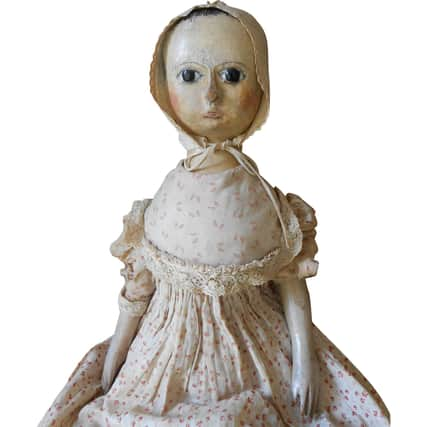How dolls have evolved throughout history


I wonder if they will be appreciated as much as the wooden dolls of Georgian children.
Many doll collectors tend to concentrate on the late Victorian and Edwardian bisque dolls, but wooden dolls from the 18th and early 19th centuries can be much more exciting to acquire.
Advertisement
Hide AdAdvertisement
Hide AdDolls made before c.1780 had a very distinctive body shape and this helps with identification.
The head and torso were made in one piece and peg jointed legs and arms were attached separately. The face was round and the neck long and thin.
The heads of these early dolls were covered in gesso and painted with pink cheeks, herringbone eyebrows and a thin mouth. The eyes were black glass, without pupils and the hair was attached to a cap and nailed to the head.
Unrestored examples with original clothes are very rare and create a big stir in the auction room.
Advertisement
Hide AdAdvertisement
Hide AdDolls made after c.1780 were generally of inferior quality and crudely shaped and carved.
Although the head and torso were still carved from a single piece of wood, the torso was more skittle shaped with a high bust, very small waist and sloping shoulders.
Facial features became increasingly crude and hair coverage was sparse. Eyes were generally close set and with pupils. Excellent condition in these wooden dolls can often mean restoration and this can reduce value.
A doll with a history is always a more appealing and valuable find. A doll from an important collection for example will realise more than an undocumented doll and original clothing will always make a doll more valuable.